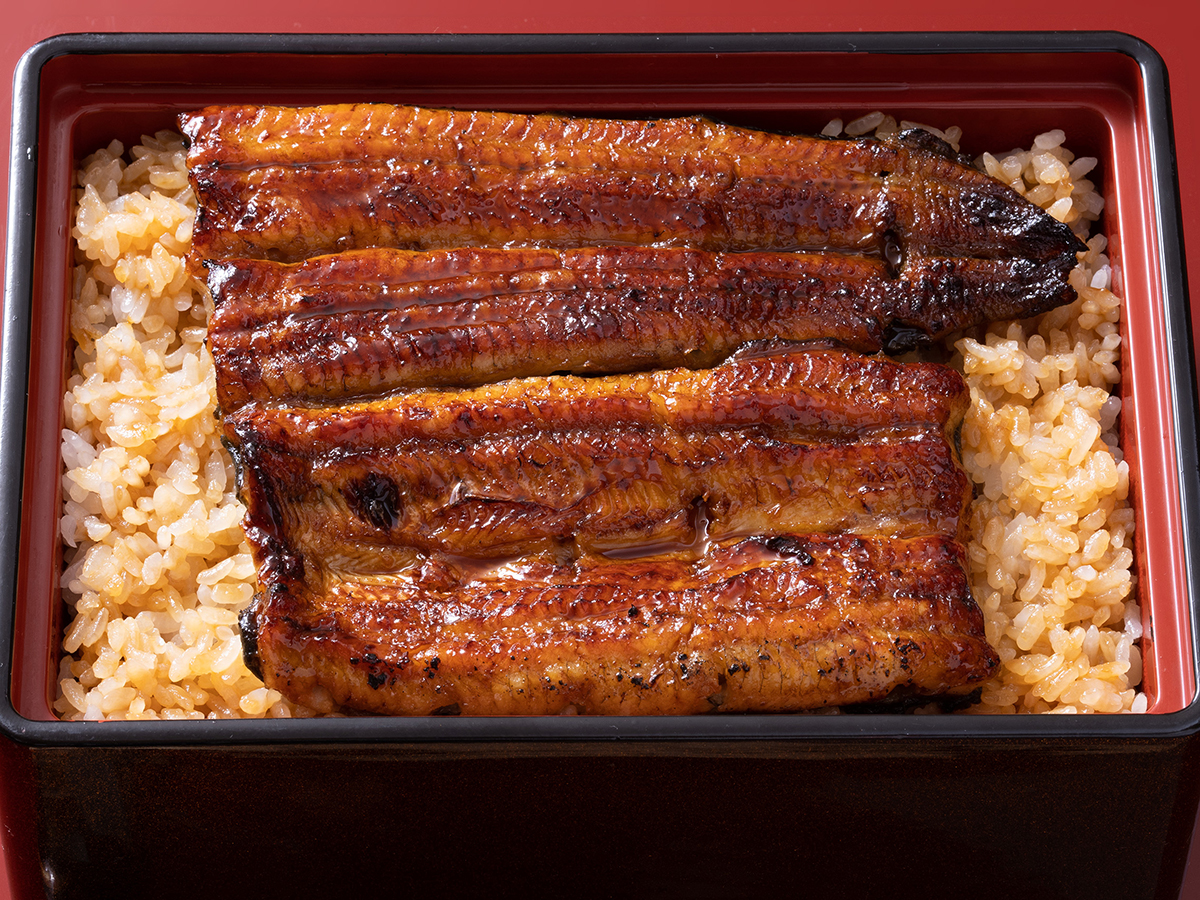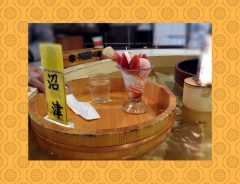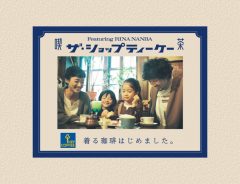
Source: © PR Times, Inc.
Feast on grilled eel at a historic restaurant, visit a unique “rabbit shrine” and enjoy a tasty retro pudding in Japan
- Tags:
- Another Place Cafe / day trip / Eel / grilled eel / Mandana / Park / Pudding / Rabbit / Retro / Tsuki Shrine / Urawa / Year of the Rabbit
Related Article
-

Donguri: A Showa Retro Restaurant Where Orders Come Floating Downstream
-

Japanese pudding specialty shop teams up with Sanrio for adorable Hello Kitty sweet treats
-

Retro Japanese favorite coffee jelly turns into a delicious drinkable dessert [recipe]
-

Key Coffee and The Shop TK collab on sustainable apparel with retro jun-kissa coffee shop theme
-

These Cute Dog and Cat Shaped Japanese Black Bean Puddings Are Purrfect
-

Japanese convenience store now serves sweet custard pudding sandwiches


Start the Year of the Rabbit with a visit to a "Rabbit Shrine"
If you happen to be in the Tokyo area as the calendar leaps into the Year of the Rabbit 2023, you may be thinking of visiting a shrine to wish for good fortune, health, prosperity, or whatever else you may have in mind.
The big one you usually hear about is Meiji Shrine (or 明治神宮 meiji jingū in Japanese), dedicated to the deified spirits of Emperor Meiji and his wife, Empress Shōken. However, as we recently explained, you can expect huge crowds and very long lines if you're going on New Year's Day.
For that reason, many people choose to visit smaller temples or shrines instead. You won't have the "grand" experience of visiting such a major shrine, but you may discover a place with its own unique charm and history. For example, since it's the Year of the Rabbit, why not try something different this year and visit a "rabbit-themed" shrine?
The 調神社 tsuki jinja Tsuki Jinja Shrine in Saitama City's Urawa Ward, just a few minutes' walk from the JR Urawa Station and just a little over a half-hour from Shinjuku by train, is well worth the visit, and can make for a memorable day trip combined with other activities in the Urawa area, which we'd like to propose.
The shrine's association with rabbits comes from the moon, 月 tsuki in Japanese. The region where the shrine was built was originally known for a folk religion called 月待 (tsuki-machi | lit. "moon-waiting") whose believers gathered at specific phases of the moon to pray, have a feast and drive out evil spirits. The shrine's name, 調神社 Tsuki Jinja comes from when the shrine was established over 2,000 years ago. It was said to contain a tribute (written 調 tsuki) for the Grand Ise Shrine. This is why the shrine is very unusual in Japan for having no 鳥居 torii gate to allow the huge tribute to be carried in.
But why rabbits? Rabbits and the moon have always been closely associated with each other in ancient Japanese folklore. Instead of a "Man in the Moon," it was believed that there was a rabbit pounding rice cakes. Hence, the Tsuki Shrine embraced the motif of the rabbit as its own.
十野七 | © PIXTA
You'll find rabbit sculptures and motifs everywhere you look when you visit. To begin with, you may have seen guardian creatures such as 狛犬 (koma-inu | "lion-dogs"), dragons, boars, foxes, and the like, either as massive stone sculptures or set atop stone columns at a Japanese shrine's entrance. When you visit Tsuki Shrine, you'll find two rabbits known as 狛兎 koma-usagi!
You'll also find a giant rabbit drinking from the water at the 手水舎 chōzu-ya water ablution pavilion, displayed as ornamental flourishes within the architecture of the shrine buildings and even in a middle of a pond.
Finally, you can get a rabbit-themed 御朱印 goshuin stamp from the shrine after you pray there (or "pay your respects" if you prefer not to pray). If you don't have a stamp book, you can buy one there with the shrine's special logo on it and they'll stamp it for you. The logo shows a rabbit holding a 御幣 gohei, a wooden wand decorated with two 紙垂 shide zigzagging paper streamers used in Shinto rituals. The stamp they put in the book also features the logo, along with name of the shrine and date of visit in beautiful calligraphy.
This is a great memento of your experience visiting this unique shrine.
Mandana: Serving grilled eel since 1886
We recommend visiting Tsuki Shrine in the morning, then making your way over to 萬店 Mandana, a historic restaurant that has been in operation since the Meiji Era.
The Urawa area is known for grilled eel, and Mandana is perhaps the most famous restaurant serving it.
The restaurant was established in 1886 (Meiji 19) by the founder, 萬蔵 Manzō. While working as a farmer, he began serving river fish, especially eel and catfish, a specialty of the area, to passengers traveling along the highway. At that time, the area was a vast waterfront district with wetlands to the east and west, and the Arakawa River flowing nearby. Later, the restaurant became famous among anglers and hunters for its wild and rustic river fish cuisine. As its cuisine became more refined, even writers and artists in Tokyo flocked to the restaurant. Mandana continues to preserve the traditional "Musashino taste," using highly sophisticated techniques, and only the freshest live eels and river fish.
Prices range from several thousand yen for a simple grilled unagi meal to upwards of 20,000 JPY for the most luxurious 懐石 kaiseki meal featuring grilled eel and other eel dishes, tempura and more.
Takeout is also available for more reasonable prices if you'd like to bring something home to enjoy later, and there's even a vending machine selling a very generously portioned grilled eel bento for 4,500 JPY apiece.
For more information, see their website here.
Mandana is located at 埼玉県さいたま市南区鹿手袋1-2-26 (1-2-36 Shikatebukuro Minami-Ku Saitama City Saitama Prefecture), just a stone's throw from 中浦和駅 Naka-Urawa Station on the Saikyo Line. The first floor is open from 11 AM to 9 PM, the second floor from 11 AM to 8 PM (reservations only) and takeout is available from 11 AM to 9 PM. The first-floor table area will be open from January 2nd and 3rd, 2023, and the other areas will resume operation from January 4th.
To get there from Tsuki Shrine, you can either take a taxi for 5 minutes, walk for about 18-22 minutes or take the bus which will shorten your trip to about 12-15 minutes, depending on how fast you walk.
Another Place Cafe
After you've feasted on delicious grilled eel, you can enjoy a leisurely stroll around さいたま市営 別所沼公園 Saitama Municipal Bessho-Numa Park. Beloved by residents and visitors alike, it's a green oasis right in the middle of Urawa. The groomed path that encircles the park is appreciated not only by joggers but also by visitors who can recharge while looking at the beautiful scenery. If you look carefully, you might even see Unako-chan, Urawa’s eel mascot hidden around the park!
Before you head back to Tokyo, make a stop at Another Place Cafe, a European-style coffee house with a chill vibe serving hearty breakfasts, delicious deli, sandwiches, salads, curries, casseroles, and other eclectic fare, as well as all kinds of sweets and beverages. It has two floors, with wonderful outdoor seating overlooking the park. You can even reserve a barbecue space on the rooftop for a barbecue party!
We recommend trying their retro-style Japanese pudding, which looks just like the old-fashioned versions served in kissaten and local eateries during the Showa Era:
When you're done, Naka-Urawa Station on the Saikyo Line is just a few minutes away and that will take you back into Tokyo.
You'll find all the locations mentioned above on this map: